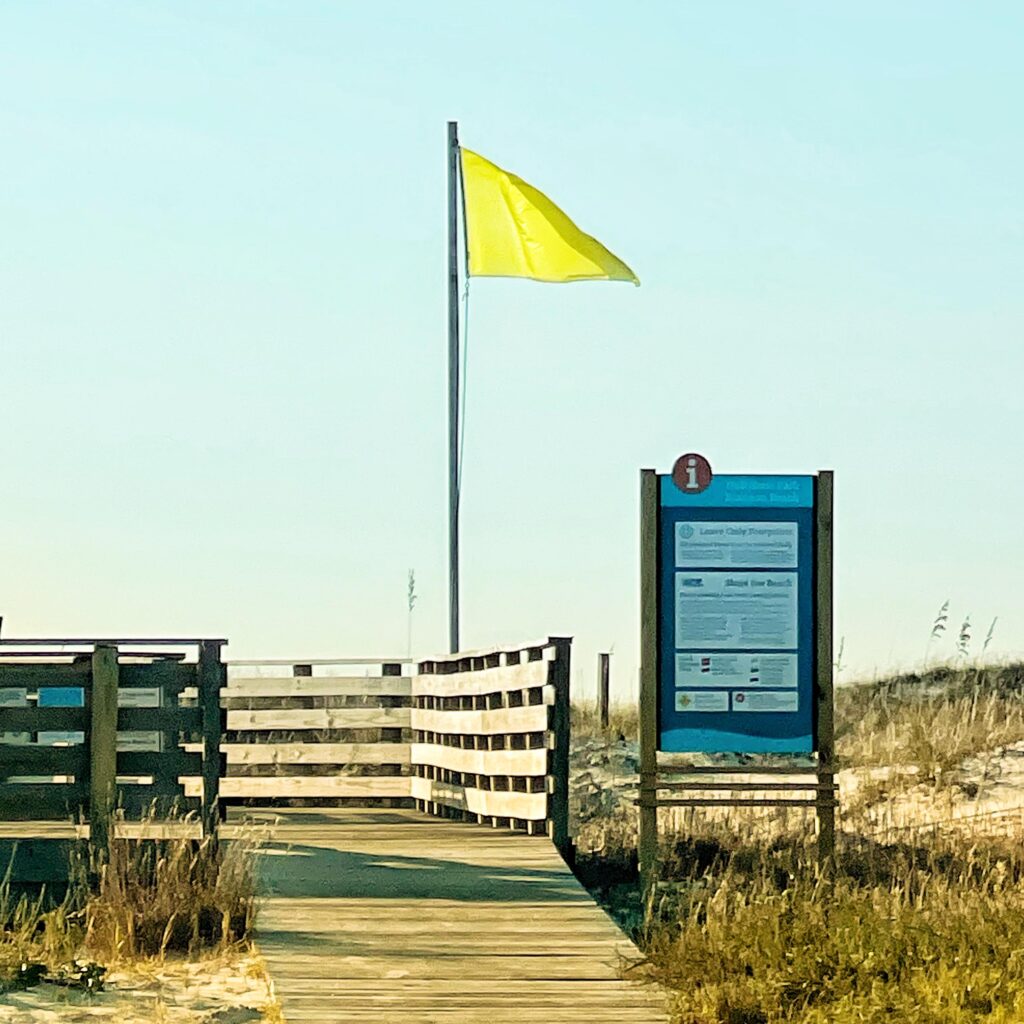Understanding the meanings behind beach flag colors can help save your life in adverse swimming conditions.
The Meaning Behind Beach Flag Colors
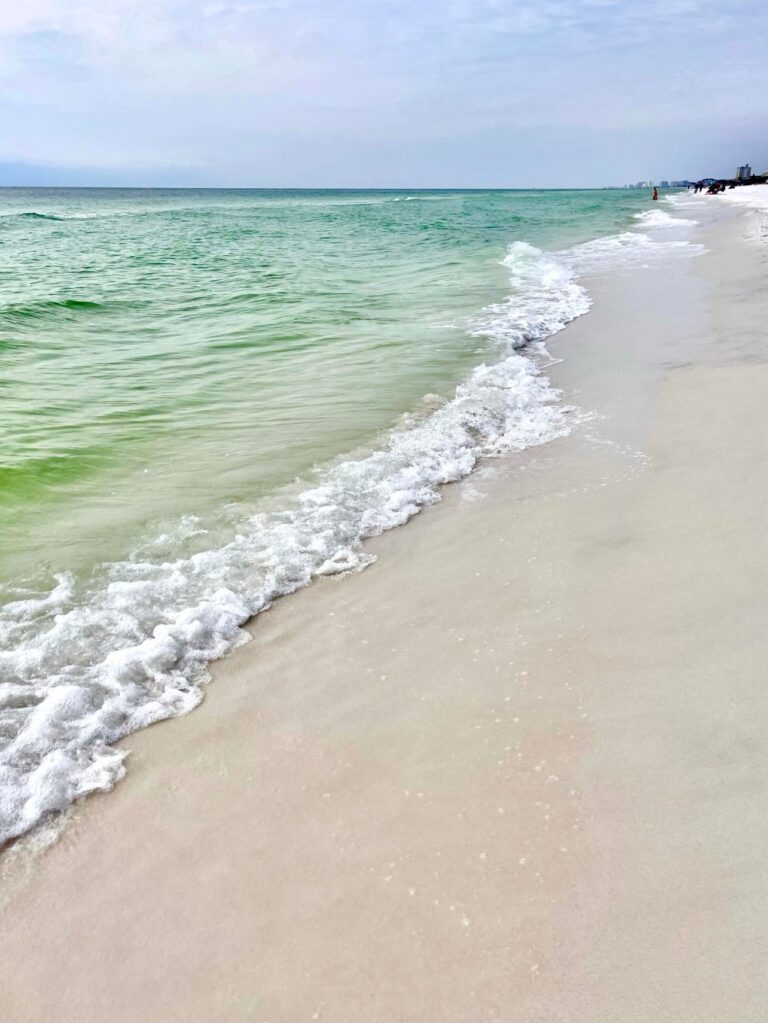
Each Color and Their Meanings
There are four different colored beach flags (5 total types), all with a different meanings. The Flag system can be used individually or in conjunction to represent a set of conditions. I know what you’re thinking, “I’m on vacation; nothing is stopping me from getting in the water!”
Although the emerald-green waters may be screaming “jump in,” it is advised to take the flags very seriously. Even when a threat isn’t visible, it still exists.
Low Hazard: The green low hazard flag is what every beachgoer hopes to see on their approach to the sand.
These are the best days to be at the beach – and be prepared for large crowds.
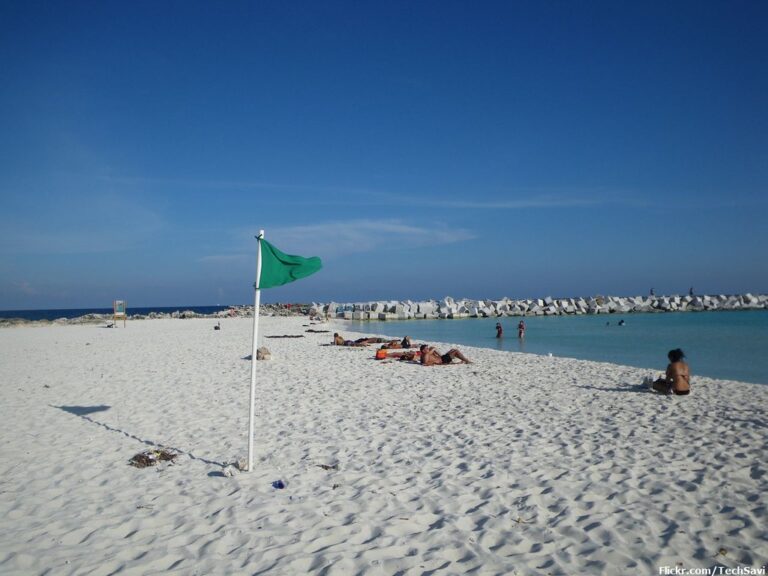

Medium Hazard: The yellow, medium hazard flag cautions swimmers of moderate surf and/or currents.
Like most beaches worldwide, there are rip currents in the Gulf of Mexico. Any coast with breaking waves can have rip currents, expanding your chance of drowning. Over 100 individuals lose their lives each year due to rip current drownings.
High Hazard: When the red flag flies for high hazard, it is recommended to either keep to the shallow waters or stay out altogether. High surf and/or strong currents can sweep away even experienced swimmers.
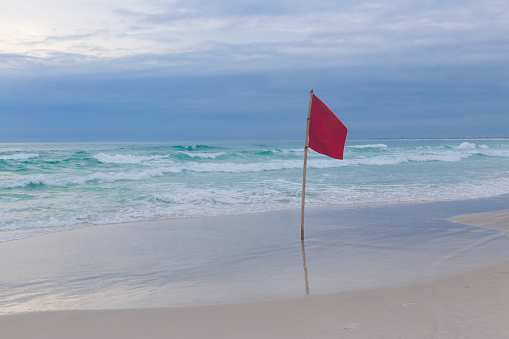
Double Red Flag: Water Closed to Public – When a double red flag is displayed, the water is closed to the public. Even the shallow waters can pose a serious risk to swimmers during these conditions.

Dangerous Marine Life: A purple flag means hazardous marine life (like sea lice, jellyfish or sharks) is present.
Jellyfish stings, for example, depending on the species, size, geographic location, time of year, can range in severity from mild burning and skin redness to severe discomfort and painful blistering with generalized sickness, including nausea, shortness of breath and muscle spasms.
Even a broken-off tentacle fragmented in the surf or washed up on the beach can contain toxicity for months and shouldn’t be touched – even if they seem to be dried up.
After pointing alone floundering jellyfish out along the shore, I spoke with a local. He said it wasn’t dangerous and that they would actually pick them out of the water and throw them at each other as kids.
Have A Great Time
Have fun while at the beach but heed the warning each flag represents.
I mainly saw yellow flags this trip except for one very windy day, a red flag with a purple flag was flying near Navarre Beach. Later I found out jellyfish were present near the shoreline.
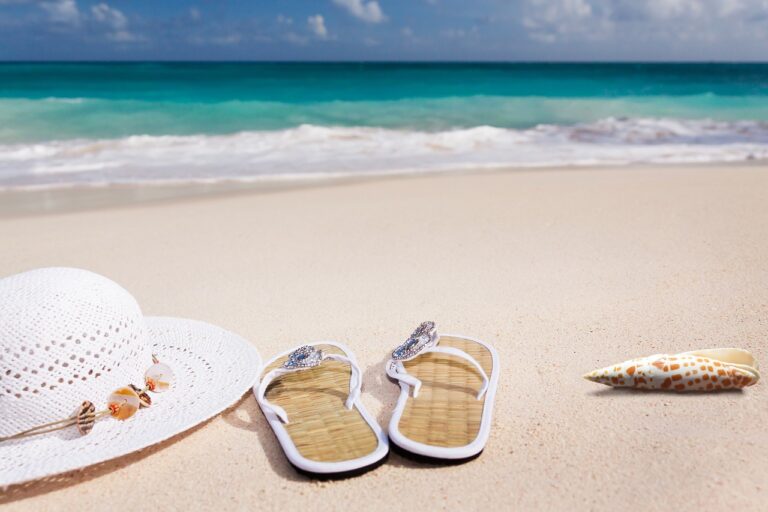
If you found this article useful, you might also enjoy these wandering inspired posts:
Share this post

Kirsti Out Wandering aspires to illustrate well-being in mind, body & spirit, giving unconditional love to self and others, and pursuing all of the wild possibilities life serves up while living full-time from a sprinter van.
Follow along! Be sure to sign up for my monthly newsletter filled with stories and tips on travel, exploring, van-living, self-care & yoga, photography and life on the road.

